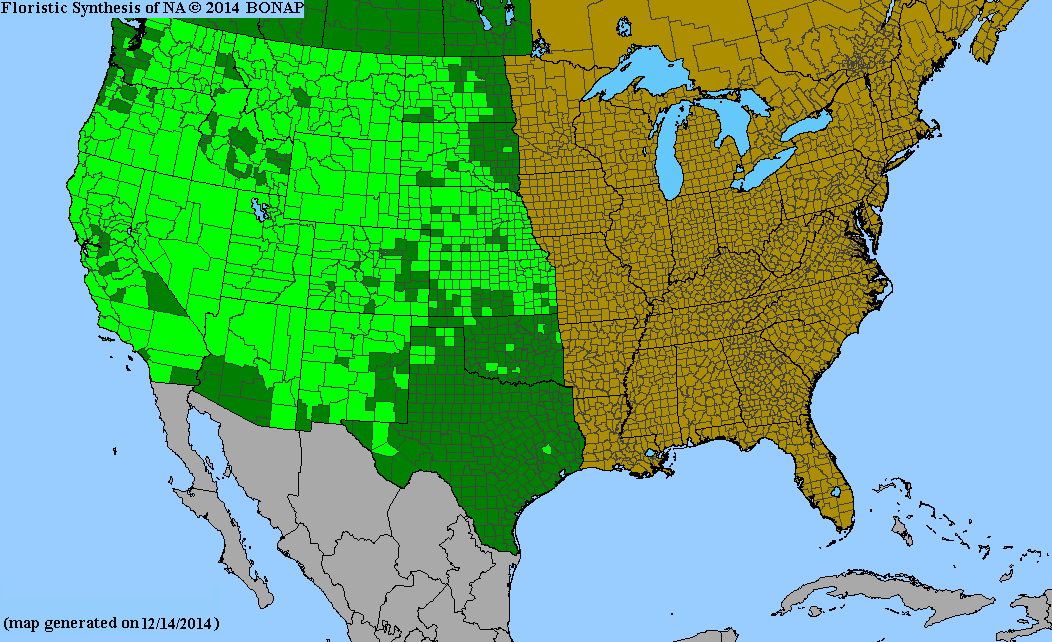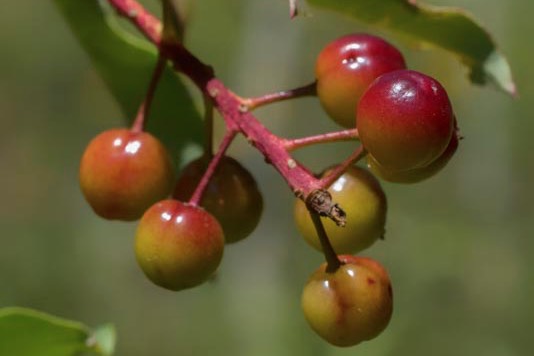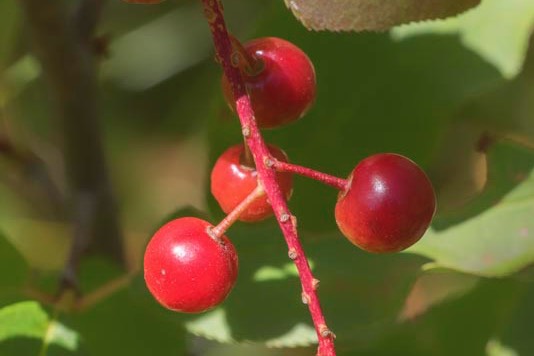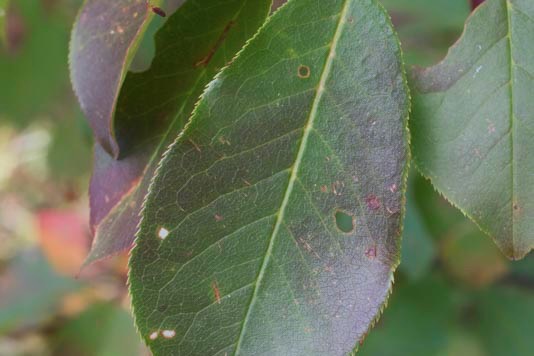(Black Chokecherry)
| Scientific Name | Prunus virginiana var. demissa or Prunus virginiana var. melanocarpa | USDA PLANTS Symbol | PRVID or PRVIM |
| Common Name | Western Chokecherry or Black Chokecherry | ITIS Taxonomic Serial No. | 529893 or 529894 |
| Family | Rosaceae (Rose) | SEINet Reference |
demissa or melanocarpa |
| Description |
Life zones and habitat: Plains to montane (4000 to 10500 ft.); rocky slopes, open forests, canyon, along streams. Plant: Shrub up to 11 feet tall; stems and branches without spines/prickles; newer stems reddish. Leaves: Alternate, deciduous leaves, obovate to elliptic, dark green, smooth upper surfaces with toothed edges; lower surfaces of v. demissa smooth or with short, fine hairs; small hairs along veins of lower surfaces of v. melanocarpa. Inflorescence: Racemes 1-1/2 to 4 inches long of small white flowers less than 1/2-inch across on short, hairy pedicels, each blossom with 5 white petals. Bloom Period: April to June. Fruit: Open clusters of red to black berries (drupes), each about 0.4-inch in diameter. Note: V. demissa is the ITIS-accepted name, however the literature does not place this variety in Colorado. Other authorities (below) recognize v. melanocarpa as the only variety present in Colorado. References: "Flora of Colorado" by Jennifer Ackerfield and "Rocky Mountain Plants" by Nelson and Williams. |
BONAP Distribution Map
 var. demissa Map Color Key |
Colorado Status: Native |
© Tom Lebsack 2025
Banner photo: Castilleja rhexifolia and a brewing storm over the San Juan Mountains
I try to provide accurate, up-to-date, and relevant information, but cannot guarantee the completeness or accuracy of any information presented on this website. I use authoritative references to insure high standards of accuracy and review and update the information frequently.



